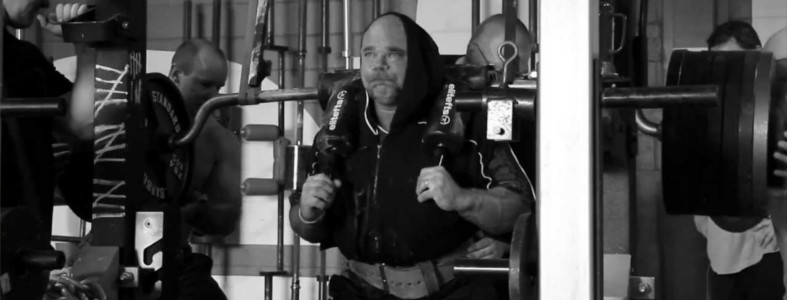
Dave Tate’s Interview
You don’t become an expert in strength training without devoting your life to the practice. Dave Tate is the owner and CEO of elitefts™, a premier name in the strength industry that provides both education and top-level products to athletes of all kinds — but that’s not all Dave is. Dave has earned his name as one of the most renowned coaches in powerlifting through years of experience both on and off the platform.
Dave now resides in London, Ohio, from where he leads elitefts™. Through his wide-range of experience in powerlifting, personal training, athletic development, and business in the fitness industry, Dave offers a perspective you won’t find anywhere else.
Samppa Nyman from GOMETAL.COM had some questions for Dave. The below interview was conducted by elitefts™ Associate Editor Jordan Houser using these questions to offer a comprehensive look at the life of one of the industry’s biggest names.
JH: You’re most well known for your prolific career in powerlifting. Before that, back in high school, you competed some in bodybuilding. Since you retired from the sport of powerlifting, you’ve returned to a bodybuilding-style training. How much do you think that bodybuilding has advanced in the decades between competing in it yourself, and now that you’re training that way again?
DT: I didn’t bodybuild long. It was back in the 80s, it would have been around ’86. I’m not a competitor now, so I have to base the differences on what I see other people doing, what I hear from other people that do compete, and what I see in the industry. The way I used to train in 86 used a three or a four-day split and each body part was trained once a week. I did a lot of double split training back then as well, where I’d do quads in the morning and hamstrings at night. Back was the same way. I would train back in the morning, biceps at night. I think that back then, we generally trained heavier than what I typically see now. Everything was hard, everything was heavy, and nothing was really light.
The other area I see a lot of significant change is the nutritional aspect. Back then, dieting was all low-fat. I remember diets that had 20 grams of fat as the maximal amount. The carbs were always around three, four, or five hundred grams a day. The dieting is completely different now because there are all different styles. You have the ketogenic diet, carb cycling, and the low fat, high carb diet. It could be that all of those things existed back in the 80s, but I was a teenager at the time and listened to the guidance of one person. I wasn’t exposed to much of the industry.
JH: The internet has made a huge impact on the fitness industry. What are some things in the fitness industry that you’ve recently learned? Are there things happening that you’ve witnessed that you see as new developments?
DT: Everything reinvents itself. What I see happening is the same thing that has happened for years and years. New programs will always show up and evolve, but if you look closely at any program, it is nothing more than a training method being utilized more effectively than how it is utilized in another program. Training to failure was really popular for a number of years and there were a lot of training programs built on it. Training to failure is only one method for building muscle, though. There was also a program built on partial rep training. All you did was partials. That’s just another method of training. It still happens today. So, if you can find what method of training isn’t being talked about today, you’ll find the next big program.
JH: You train with John Meadows on a regular basis. What kind of effect do you think he’s having on the fitness industry and the training and nutrition of bodybuilding right now?
DT: I think John’s having a bigger effect than he realizes. He’s bringing back old school work ethics. For a number of years, training to failure was a taboo. If you look at blogs and articles from the past ten years, almost all of them are going to tell you not to train to failure. John’s coming around now and saying that’s okay. With that, he’s bringing safety factors so you can go to failure without killing yourself. There are certain aspects of John’s training, like training hamstrings before quads and doing compound movements toward the end of the session, that people are going to start doing, and claim they “train Mountain Dog.” It’s just like back when I was helping Louie present a lot of concurrent and conjugate method training and we had people tell us they trained Westside just because they did board presses. Just because you board press and box squat doesn’t mean you train Westside. The same goes for John’s Mountain Dog Training Program.
JH: Let’s imagine a powerlifter. He wants to keep competing at the level he has been, but he looks like shit. If you look at this guy, you cannot tell that he is lifter. What kind of guidelines or recommendations would you give him to continue pushing his squat, bench, and deadlift, but also help his appearance?
DT: The first thing I’d change is his diet. By saying he looks like shit, I’m going to assume he looks like shit because he’s fat. Before even getting into a question like this, my response would be, “is looking good more important than winning?” If you’re in the sport, winning should be one of the major reasons you’re in it. Typically, powerlifters are going to take on a different build based upon the training that they do. This will determine what is developed and what is not developed. If a lifter wants to look more complete, it’s just a matter of putting in more hypertrophy and bodybuilding work towards the end of the programming. It should not make it harder to recover from the main work. I’m all for adding workload and all for adding volume to any lifter’s program, as long as it doesn’t mean you have to add recovery work. It becomes counterproductive then.
Accessories are going to be in a powerlifter’s program for two reasons. The first is to build a movement that carries over to a main lift. If you know a board press builds your bench press, you need to determine what lift is going to help your board press. If it’s triceps extensions, you’re going to do triceps extensions to enhance and build the movement pattern of the board press.
The second reason for accessories is to build muscle mass. Muscle mass won’t produce as much strength as maximal or explosive strength development, but it will still produce strength. Look at the other lifters in your weight class. If they all have huge, hanging triceps and you don’t, that is probably a good indicator that you need to get yourself a pair of triceps.
The last thing about accessories for muscle mas is strength. You can build muscle without having to go super heavy. Bodybuilders have been doing this for years. When your goal is to build mass through hypertrophy training, don’t select a movement like a lying triceps barbell extensions that has the potential to trash your elbows. Find an exercise that has less joint torque and joint compression. This is where you should start to consider more bodybuilding type movements that will be lighter, slower tempo, have a higher contraction, and will be much easier to recover from.
JH: You’ve had a lot of injuries in your career. You can’t really avoid this in the sport of powerlifting. Elitefts™ sponsors a lot of lifters that are big in the sport right now, and inevitably they’re going to have injuries. When a lifter comes to you with an injury, what do you tell him? What are the most important things for a lifter to consider when they want to come back and make more progress?
DT: I always tell them to see a doctor. It’s key to have a good relationship with an orthopedic that understands what your physical plan is. Lifters aren’t like other orthopedic patients, so it’s important to communicate with your doctor.
When I was still competing, I became very efficient at coming back from injuries —almost too good. I wish I would have taken more time off at the front end of the rehab so that I could have pushed harder on the back end of the rehab. Any time a lifter gets injured, the first question that goes through their mind is, “how long is this going to take?”
In my mind, the exercise for me that was going to fix the injury the best was the same exercise that injured me in the first place. This was usually the competitive lift, so the number one goal was to regain range of motion. This should have meant full joint range of motion, but for me it always meant range of motion to be able to squat, bench, and deadlift. As soon as I could at least get my hand close enough to do a bench, I started benching. If it was a shoulder or pec injury, I always started with a reverse band set up to a three board with just the bar. This means that it weighed essentially nothing, but when you’re four days out of surgery and can’t even hold up your arm to begin with, this is all you can do. By letting myself strain early on in the rehabilitation, it meant I wouldn’t worry about the injury once I got back into the 500-pound rage, where I got hurt in the first place.
Doing 65 pounds for basically a one rep max the week after surgery wasn’t enough to tear anything off, and it was much better than trying to do 65 pounds for 30 reps later in the rehabilitation. Once the muscle really starts to fatigue and fail, you’re more likely to be reinjured. Through this process, I was able to work back up to heavier weights than I used before the injury, and never have to deal with the mental bullshit. I’d already been straining for months beforehand and weight was just the irrelevant factor.
JH: A lot of those injuries came before you started training at Westside. Louie always talks about how his training methods allowed him to continue his career when he thought it was over. This is something you’ve talked about before, too. The reputation for Westside is that you guys never stopped going hard, and that even when you should have stopped three sets ago, you put on another plate and got under the bar. What was it like to train in this environment? Does Westside live up to the ‘crazy atmosphere’ reputation?
DT: I wouldn’t say crazy. It was our normal. We wouldn’t back off, even when Louie would tell us to. When I was there it was a small building with 25 elite level powerlifters that were all top 5 or top 10 ranked. There were some egos, but they didn’t matter to us. We really wanted to see everyone else do better. But every day in the gym we would try to hurt each other. To be competitive like we were, we had to be willing to do the things that other people wouldn’t be willing to do. We had to go places that other lifters wouldn’t go.
I could tell stories about every max effort day. A typical max effort day would be something like a suspended good morning with the safety squat bar. I sucked at this bar, so I think my best from a low hang was 485 pounds. I’d do 405 and feel like it killed me. I’d sit down and think about how stupid it was. As soon as I got under the bar, I knew it was going to be hard. It took four seconds to stand up, and then when I sit down the guy next to me says, “you think you’ve got another one?” I tell him I don’t know, and then the next guy goes up and does it for five. Immediately you’re like, “Mother fucker. If he can do this for five, I should at least be able to do 455.”
This time it takes forever to stand up and I’m seeing stars at the top. The guy next to me says it didn’t look good at all, and asks what I’m going to take next. Then 475 goes on the bar.
That’s how it was at Westside. Everyone pushed the envelope as hard as we possibly could. They were the most extreme training conditions I’ve ever been in.
JH: Through this time at Westside, you developed a mentality that you’ve talked about before. You call this Blast and Dust. How does this mentality work, and how have you grown from that mentality into how you handle your life today?
DT: Blast and Dust is an all-or-nothing mentality. If I was training for a meet, that became the most important thing in my life. It became more important than work, family, my own health, or anything else. It’s full throttle down the whole time. During this, everything else in my life wouldn’t fall apart, but it would become neutralized and not improve. After I started the company, I realized I couldn’t do this with my training because by the time that I would be done with whatever objective I had, there was so much shit I was behind on. When I was focused on the company, I experimented a lot with DC training so that training sessions would take 30-45 minutes instead of an hour. An hour and a half a week is more doable than five. I do still have phases where I push really, really hard in my training, but I’ve structured it around my weekends. As I’ve gotten older, I’ve found more balance in the middle instead of being on one side or the other.
JH: Don’t get me wrong, that sounds great. To live a balanced, to find ways to prioritize the things that matter to you sounds ideal. But for an elite level lifter, is this even possible? Does balance exist for an elite lifter?
DT: No. I don’t know if there is ever such a thing as a balanced life, for anyone. You strive to be, and that should be the goal. It’s like values that you have, or any map you use to lead your life. Whatever those values are, you’re not always going to live them perfectly, but they are your benchmarks. When you fall off, you know you have to come back home.
You’ll know when you’re falling away from those benchmarks. You’ll be stressed. You won’t be able to sleep. You’ll have other shit on your mind all the time. You’ll feel like you’re living a life of chaos. What I think happens with elite level athletes or elite entrepreneurs or anyone else who is extremely passionate and focused on one thing is that they lose sight of returning to home. They begin to do things that they normally wouldn’t, and justify it by saying “I had to do that.” After the next three or four times of doing that, the whole pendulum has shifted and it’s their new norm. Before they know it, they’re so far away from who they want to be or who they thought they should be, that they no long even know who the fuck they are.
In many cases, this is what it takes for an individual to reach their elite level. I’m not saying it’s right, but it’s how it is. They suffer side effects in their personal relationships along the way, and there is a path of destruction it takes to get there.
I won’t say that if you try to stay balanced you’re going to always live a life of mediocrity, because that’s not true. Your life is determined by what you determine successful.
JH: We’ve talked a lot about your past, but what are you doing now? After everything you’ve accomplished in your training, look back at the past year. What do you feel is your biggest achievement of this year?
DT: This past year sucked. It’s a tough question because we’re dealing with a year that I spent a large part of it coming back from hip replacement surgery. I was trying to still find enjoyment in training. Sometimes, it’s just training and it just sucks. A large part of the year was like that. I couldn’t really push hard, and while rehabbing my hip I was also trying to get my shoulder back into place. I was trying to rebuild the robot to push with whatever I wanted my next challenge to be. It’s frustrating when training is boring. It’s cyclical in nature, and really repetitious. It forces you to make lifestyle changes because you’re not on par as tightly with your diet, because it’s not really necessary. After all of this, I think my greatest achievement is being back to a point where I know I’m ready to go hard and blast again. As a 46 year old with a hip replacement, you’re not coming back thinking, “how long is this going to take?” You’re coming back asking, “What am I going to be able to do?” It’s scary when you think the drive to push hard may be gone. When it’s been part of your life since you were 13 years old, it’s even harder. I have to train with some type of purpose. Someday, I’m going to be faced with that ending, and it’s one of the greatest fears of my life. What am I going to do then? I don’t think I’ll stop, but will I have to? I don’t know. After this year, I know it isn’t going to change that easily. For a while, I wasn’t so sure.
For more from Dave and elitefts™, visit www.elitefts.com.

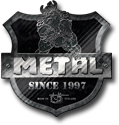



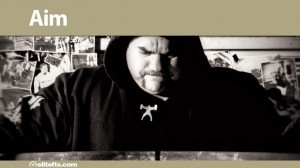


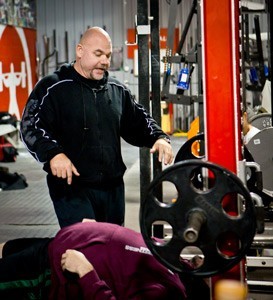

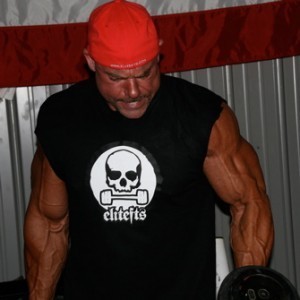


No comments yet.